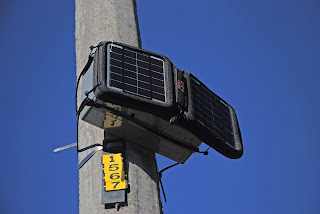What was CONA Rangiora 2016 all about?
In winter 2016 the CONA project went back to Rangiora in Canterbury for a second year. In 2015 we'd trialled two new air quality sensing technologies - the PACMAN for indoors and the ODIN for outdoors, as well as doing detailed measurements of meteorological parameters like wind speed, direction, temperature and humidity around the town. We learned that we could use PACMAN to distinguish smoke being generated in the home from smoke seeping into the home from outside. We also found that changes in the wind shortly after sunset seemed to moving smoke around to different parts of the town.
So why did we go back for another winter? What did we hope to learn?
The 2016 study focussed on three main themes:
In future posts we'll tell you how the ODINs performed and what new insights they revealed about air quality in Rangiora.
So why did we go back for another winter? What did we hope to learn?
The 2016 study focussed on three main themes:
- Upgrading the ODIN sensors and scaling up the network from 6 to 18 stations.
- Pairing some of the ODINs with PACMANs by placing outside the homes of our participants to learn more about the origin of smoke in the home.
- A more thorough evaluation of the performance of the new sensors by comparing with more expensive, conventional instrumentation.
 |
| One of the new upgraded ODINs on a lamppost in Rangiora |
The new ODINs were deployed across Rangiora in waves through July and August. Firstly they were sent to the Environment Canterbury monitoring station in the centre of town to compare their response to that from ECan's sophisticated regulatory monitor.
 |
| Newly built upgraded ODINs being tested at the Environment Canterbury regulatory monitoring site in Rangiora in July 2016 |
They passed that test with flying colours. Next they were installed across the town at four types of site:
- on 6 lampposts spread across the town,
- at our 3 temporary weather stations at the western and eastern edges of the town,
- outside at the homes of 8 of our study participants, and
- at the ECan monitoring site.
 |
| New ODIN attached to a temporary NIWA automatic weather station at Rangiora Racecourse |
In future posts we'll tell you how the ODINs performed and what new insights they revealed about air quality in Rangiora.
Comments
Post a Comment